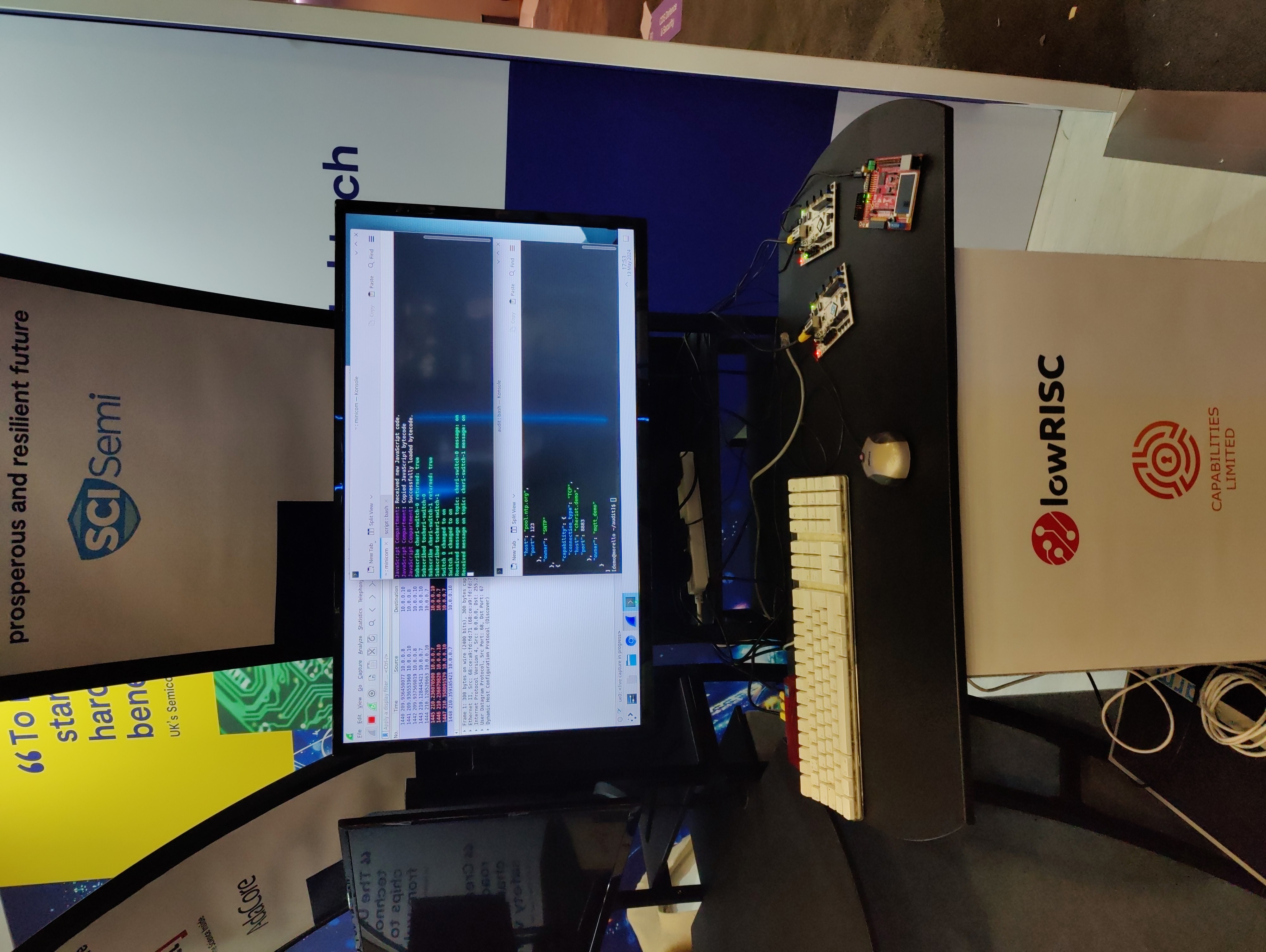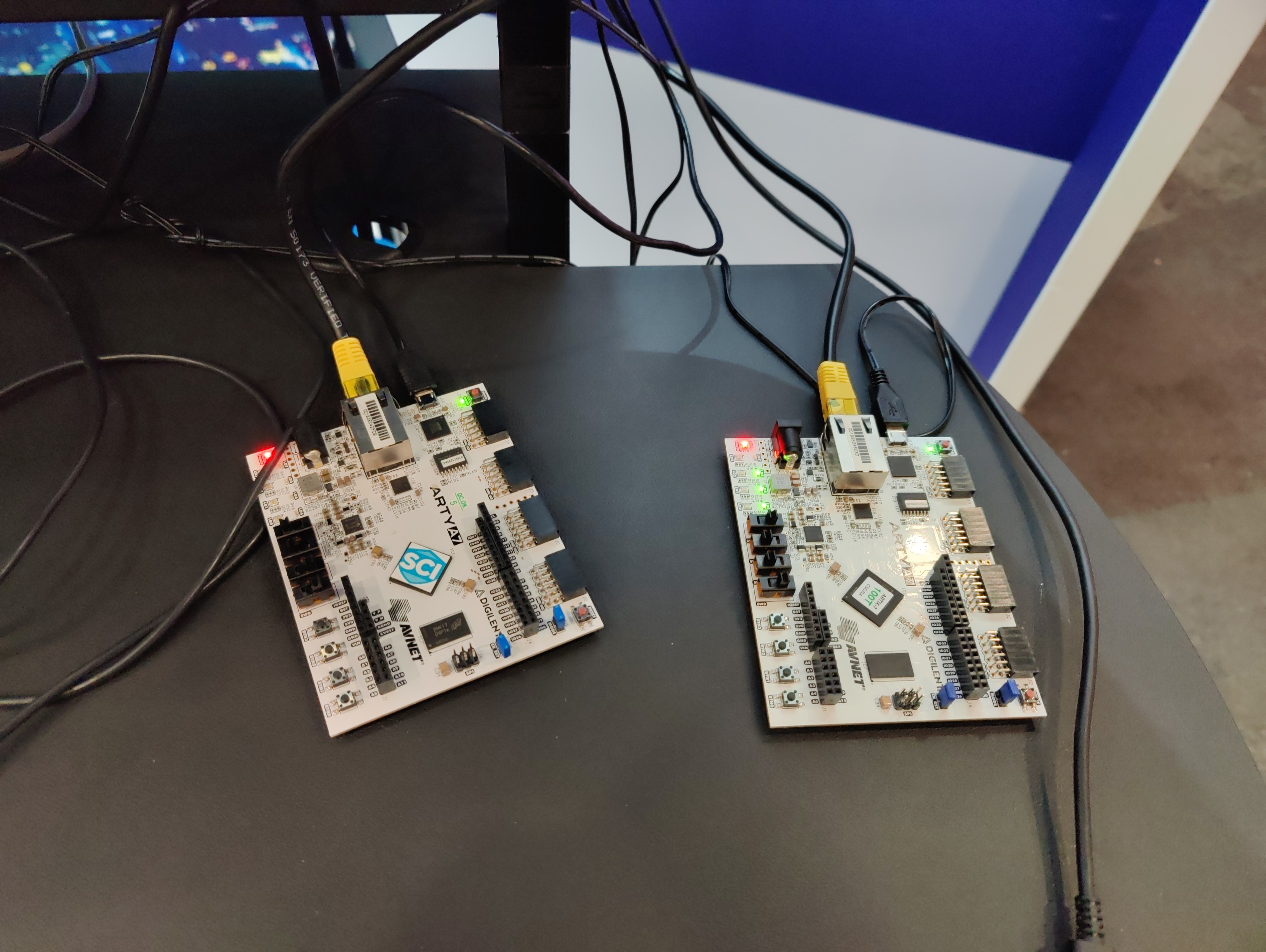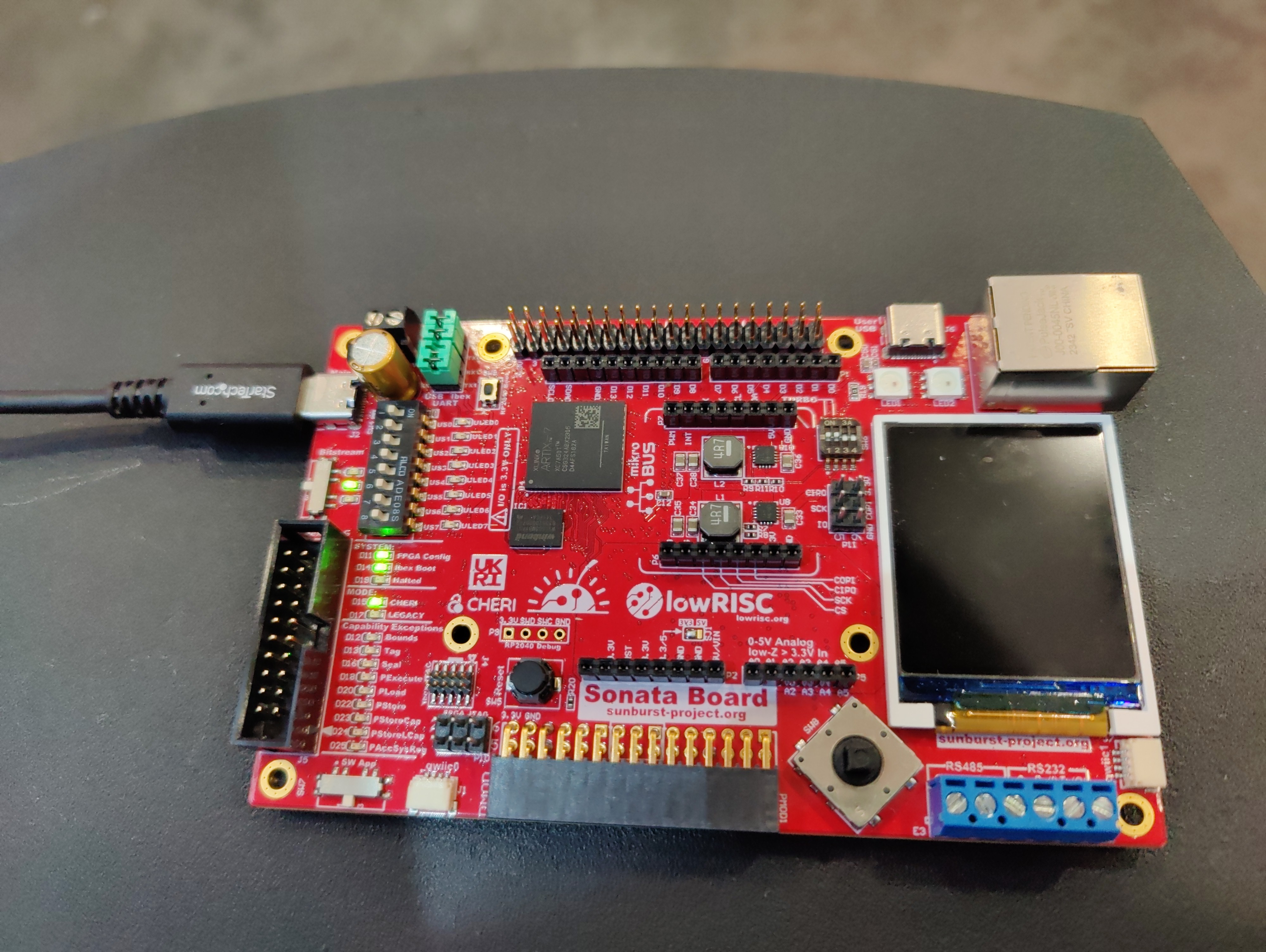CHERIoT at CyberUK

This week, we’ll be doing some CHERIoT demos at CyberUK in Birmingham. If you’re going to be at CyberUK, come and see us, we’ll be at stand C2 in Hall 3 on level 4!
We’re doing two demos. One is the world’s most over-engineered light switch. This is using a pair of Arty A7 FPGAs to run the CHERIoT Ibex and our prototype compartmentalised network stack. This small example has ten compartments:
- The RTOS scheduler
- The RTOS shared heap allocator
- The FreeRTOS+TCP TCP/IP stack
- The BearSSL TLS 1.2 stack
- The FreeRTOS SNTP library
- The on-device firewall
- The network control plane
- The FreeRTOS coreMQTT library
- The demo control loop, which fetches JavaScript bytecode from MQTT and manages watchdogs
- The JavaScript runner
All of this (including the JavaScript VM) runs in a total of 256 KiB of RAM (for code and data), with complete spatial and temporal memory safety. Every network packet is in a separate heap allocation and so inherits the same use-after-free protection.
The JavaScript uses one of the switches on the dev board to determine the mode. In one mode, it will publish the positions of two switches to the MQTT server, in the other it will subscribe to those MQTT nodes and
This shows an end-to-end CHERI client-server system. The tiny embedded devices are CHERIoT, the server side is CheriBSD on Morello. It’s running the Mosquitto MQTT server, which is built as a CHERI pure-capability process and so also has complete spatial and temporal memory safety, though no compartmentalisation (yet!), on the server. This demonstrates a complete end-to-end CHERI deployment.

We’re also showing off the CHERIoT auditing tooling tooling for this demo. You can inspect the demo and see which compartments may allocate memory (and how much), which compartments may connect to network servers (and which addresses and ports), and so on.
Our second demo is on the new Sonata prototyping board from lowRISC. Unlike the Arty A7, this is specifically designed for prototyping CHERIoT systems. It’s newer and so we don’t have as much support for it in the RTOS, but it’s designed with a rich set of peripherals that should make it a more interesting platform in the longer term.

On this system, we’re showing a compartmentalisation demo, based on the compartmentalisation exercise. This is intended to simulate an attacker who has managed to launch a code reuse attack and is trying to impact either confidentiality or availability. Code reuse attacks on a CHERIoT system are incredibly hard and so we cheat: we provide a JavaScript interpreter with a set of FFI functions that allow you to load and manipulate pointers from the JavaScript that you load over the UART.
There’s also an native function exposed to JavaScript to report whether you’ve managed to correctly guess a secret. The memory address of the secret is printed at the start (assume that it’s leaked via some other exploit).
We’ve built this example in two versions. The first is close to the starting point for the exercise: everything is in one compartment. In this version, you can start from the compartment’s global pointer and load the secret. You can also simply do a null-pointer dereference to crash the compartment. The demo then needs restarting.
In the other mode, we believe it should be impossible to leak the secret (come and try!). If you make the compartment running the JavaScript interpreter crash then it will recover.
Folks from SCI Semiconductor will be there, so if you’re interested in buying CHERIoT microcontrollers (not FPGA simulations) then drop by the stand!